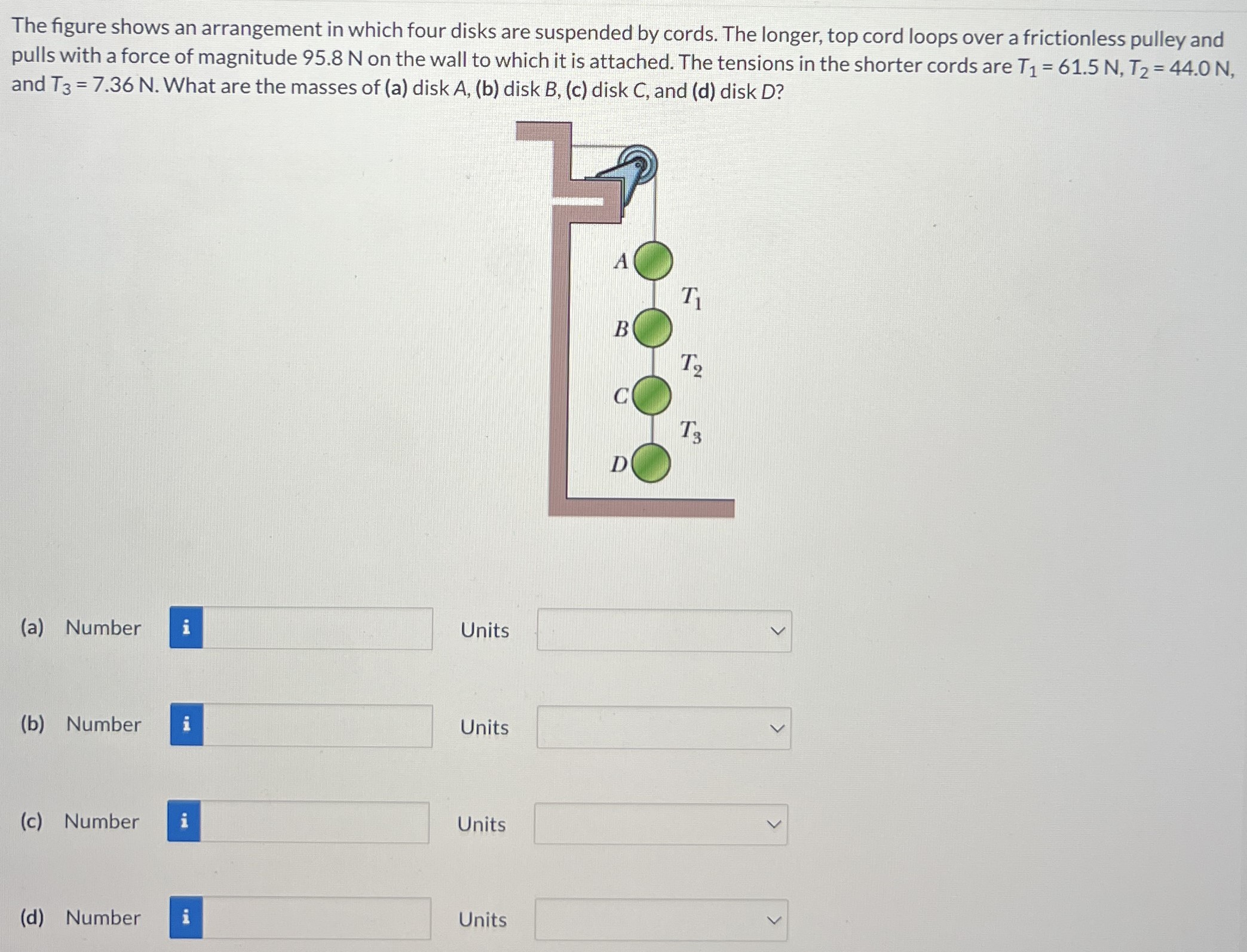The figure shows an arrangement in which four disks are suspended by cords. The longer, top cord loops over a frictionless pulley and pulls with a force of magnitude 95.8 N on the wall to which it is attached. The tensions in the shorter cords are T1 = 61.5 N, T2 = 44.0 N, and T3 = 7.36 N. What are the masses of (a) disk A, (b) disk B, (c) disk C, and (d) disk D? (a) Number Units (b) Number Units (c) Number Units (d) Number Units
